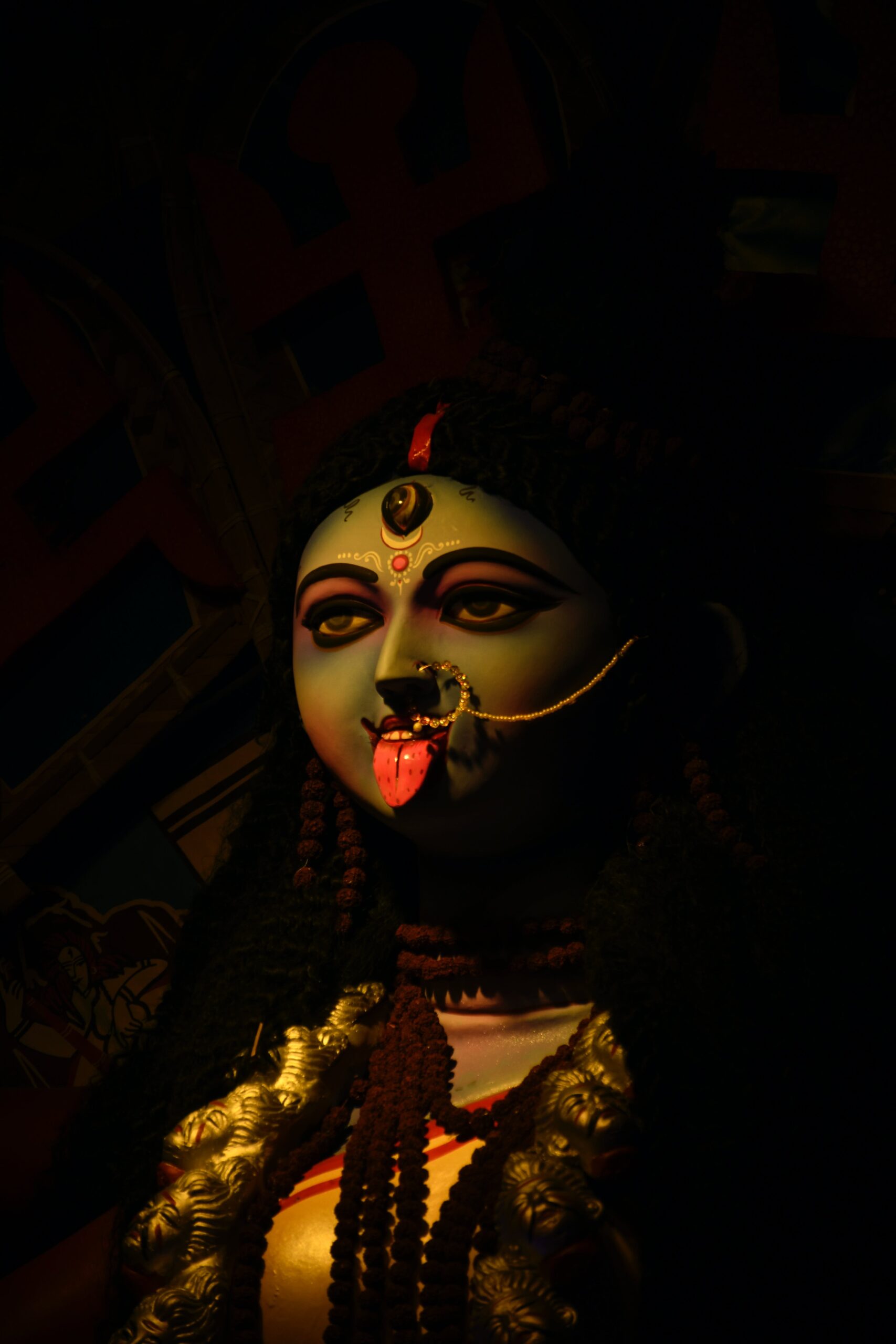Kali Puja, while primarily associated with West Bengal, extends its fervent celebration to various regions across India, each with its regional nuances and flavors. Here, we delve into how Kali Puja is observed in different parts of the country.
In North India, especially Uttar Pradesh and Bihar, Kali Puja is celebrated with grandeur and shares cultural significance with West Bengal. Elaborate processions, music, pandals, and the lighting of lamps create a festive atmosphere.
In South India, Kali Puja integrates regional customs, emphasizing the lighting of lamps and the celebration of knowledge and enlightenment. Kolam designs and the triumph of light over darkness are key elements.
In Maharashtra and Goa, the worship of Goddess Kali blends local customs with the essence of Kali Puja. Devotees visit Kali temples and celebrate with cultural performances, music, and exchanges of sweets and gifts.
In the eastern states like Odisha and Assam, Kali Puja coincides with Diwali, featuring processions, cultural programs, and decorations. Lighting lamps is a significant part of the celebrations.
The Essence of Kali Puja in India
Kali Puja, despite regional variations, universally honors the fierce aspect of the Divine Mother, seeking her blessings for protection, strength, and obstacle removal. It symbolizes the triumph of good over evil, light over darkness, and the courage to confront challenges, reflecting India’s diverse traditions.
A Global Celebration
Kali Puja holds a special place in the hearts of the Indian diaspora, connecting them with their cultural roots and fostering a sense of belonging and continuity.
In the United States and Canada, Kali Puja is celebrated with grand events organized by temples and cultural organizations, involving younger generations to pass on cultural significance.
UK’s vibrant Indian community observes Kali Puja with enthusiasm, featuring cultural programs, bhajans, and the lighting of lamps. In Australia and New Zealand, Indian communities honor Goddess Kali with pujas, cultural performances, and community feasts, adding to the multicultural tapestry.
Countries like Singapore and Malaysia in Southeast Asia maintain Kali Puja’s traditional form, reminding Indian diaspora communities of their shared cultural heritage.
In the distant corners of the Caribbean and South America, Kali Puja is celebrated with devotion, demonstrating the resilience of cultural traditions.
Challenges and Adaptations
Celebrating Kali Puja in the diaspora presents unique challenges, requiring creative solutions to adapt to local environments. However, Indian communities successfully preserve the festival’s essence while incorporating local elements.
Kali Puja in the diaspora transcends religious boundaries, uniting people in a cultural celebration that symbolizes the resilience of Indian culture and its ability to adapt while preserving traditional values. It reflects enduring devotion to Goddess Kali and the unity of the global Indian diaspora.

